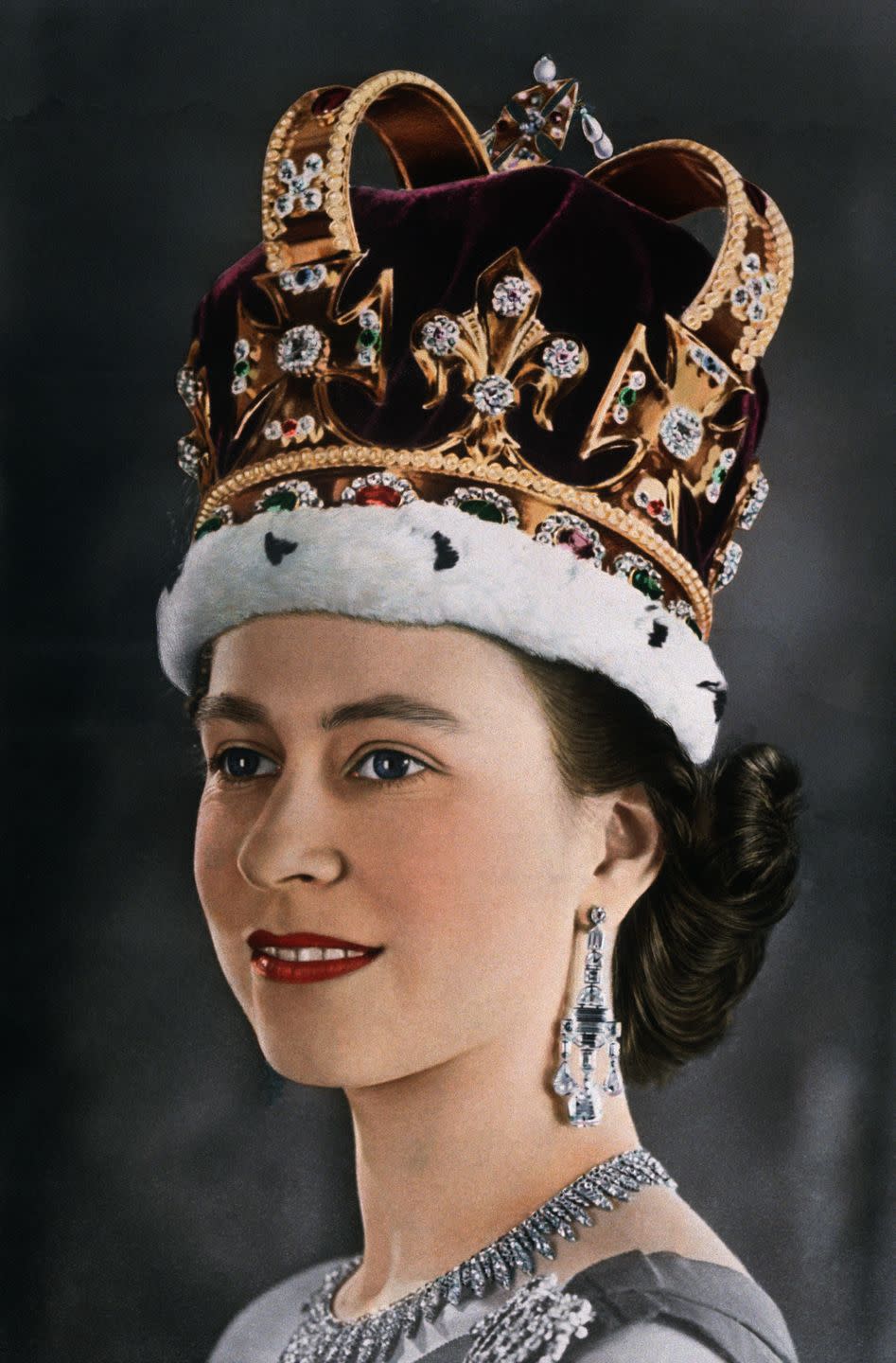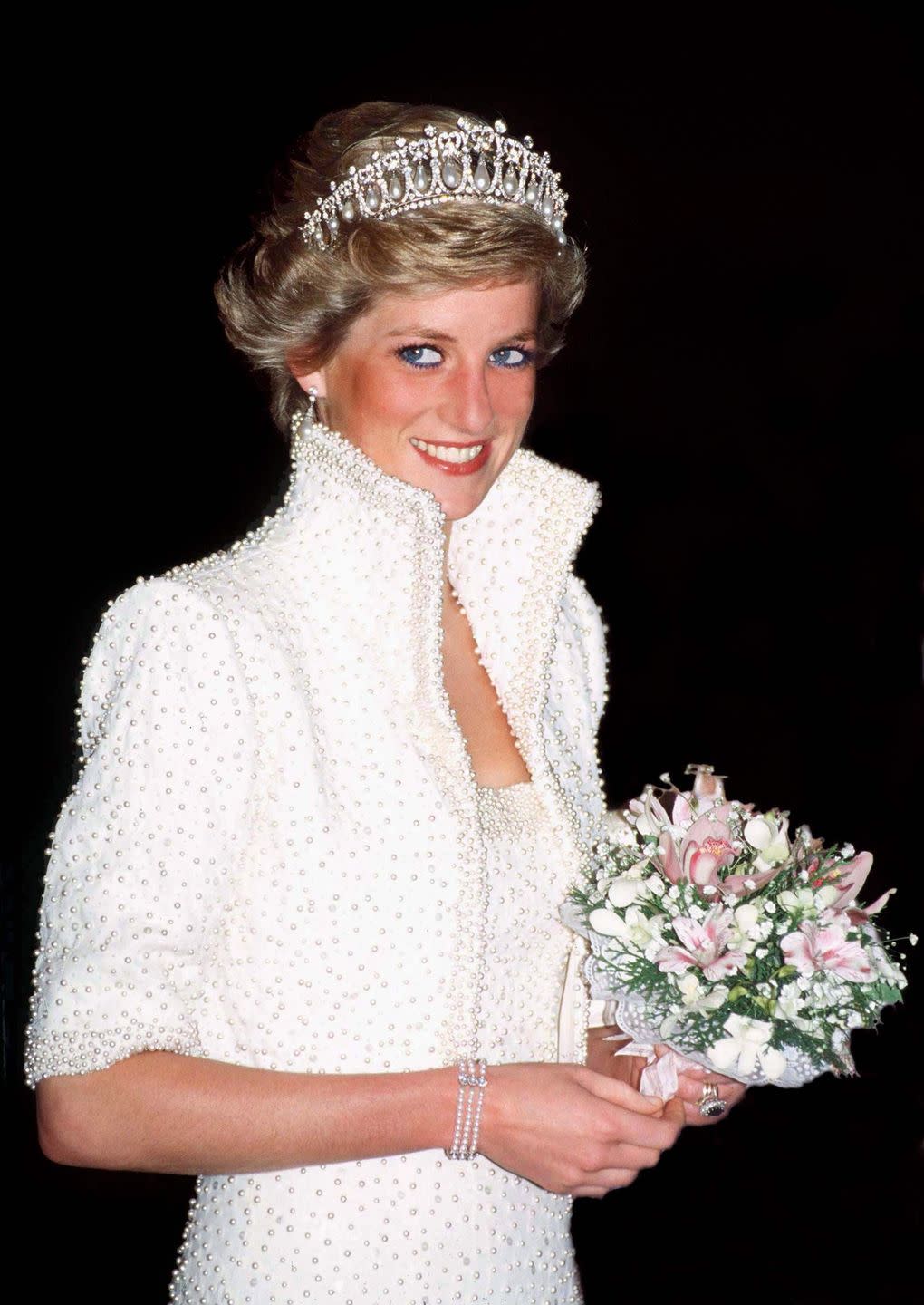Crown, Tiara, or a Coronet? How to Tell The Difference Between the Three
Though ballgowns, evening dresses, and tailored suits are a must for a regal wardrobe, the accessory bestowed on one's head is what truly differentiates monarchs from the rest. Crowns, tiaras, and coronets are often worn by members of royal families around the world. The difference between the three not only lies in aesthetic elements, but also aristocratic rank, and who gets to wear them.
The Crown
Perched on the heads of reigning kings and queens, crowns are often bejeweled in precious stones such as diamonds, sapphires, rubies, and pearls. One of the most notable crowns in the United Kingdom is St. Edwards Crown, also known as the Coronation Crown. This crown was made in 1661 for Charles II to replace the medieval crown, which had been melted down by parliamentarians in 1649, following the execution of Charles I, according to the Royal Historic Palace website. The last this crown was seen was during the late Queen Elizabeth II's coronation in 1953 and will come out again this May for King Charles.
This crown is usually presented with the Coronation Regalia, the set of sacred objects (Sovereign's Scepter with Cross, Sovereign's Orb, and the Coronation Spoon) used during a coronation ceremony.

Another important crown to note is Imperial State Crown. Made of gold and set with 2,868 diamonds, 17 sapphires, 11 emeralds, 269 pearls, and 4 rubies, this crown is seen on the monarch as they leave Westminister Abbey following the coronation, as well as at State occasions such as the annual State Opening of Parliament.
The Tiara
The origins of the tiara, a bejeweled head ornament, date back to Ancient Greece and Rome where it was called a diadem. The accessory became fashionable in Europe during the 18th century and has since been a prestigious piece of jewelry for women.
Physically, the tiara and crown differ in shape. The base of the crown is always a full circle, while the tiara is a semi-circle. While the crown is bestowed on the heads of both men and women, tiaras are worn by the latter. Kate Middleton was last seen donning a tiara during the diplomatic reception in December, and the late Princess Diana famously wore the Spencer Tiara on numerous occasions, including her wedding in 1981, and in 1992 while visiting the President of India during an official visit to the country.

Unlike the crown, which is only worn by kings or queens, tiaras may be worn by anybody, and are usually worn at events calling for "white tie" or the most formal of evening attire dress codes. In an interview with Town & Country in 2018, jewelry expert Geoffrey Munn explains that the tiara, unlike the crown or coronet, has "never been a symbol of wealth or position."
But, according to Munn, "ancient tradition has it that they must be a bride or already married."
The Coronet
Lastly, the coronet is a smaller, simpler crown that is worn by lesser royals and peers. For example, people of nobility who have titles such as Marquesses and Marchionesses, Earls and Countesses, Barons and Baronesses, and some Lords and Ladies will don them.
Each coronet style correlates to one's title.
Duke or Duchess: Coronet will have a silver gilt circled with eight strawberry leaves.
Marquess or Marchioness: Four strawberry leaves and four silver balls (known as pearls, though not actually) that are slightly raised above the rim.
Earl or Countess: A coronet of eight strawberry leaves (four visible) and eight "pearls" raised on stalks, of which five are visible.
Viscount or Viscountess: A coronet of sixteen "pearls" touching one another.
Baron or Baroness, Lord or Lady of Parliament: A plain silver-gilt circlet, with six "pearls"
For the British blue-bloods attending the coronation ceremony, coronets are to be put on only after the monarch is finally crowned. A month before the coronation, Christie's auction house held a sale which featured three coronets: an Earl's Coronet made for George V's Coronation; a Countess's Coronet made for William IV's Coronation; and a Viscount's Coronet made for Victoria's coronation. Who might've acquired them? "These were likely given up by family's whose bloodlines might've ceased to exist, and those who are lovers of history might've been interested in acquiring these pieces," Jill Waddell, Vice President, Senior specialist tells Town & Country. Waddell also mentions how sandwiches and "strong drinks" were seen nestled in coronets at Queen Elizabeth II's coronation. Might we see the same at King Charles? Only time will tell.
You Might Also Like
